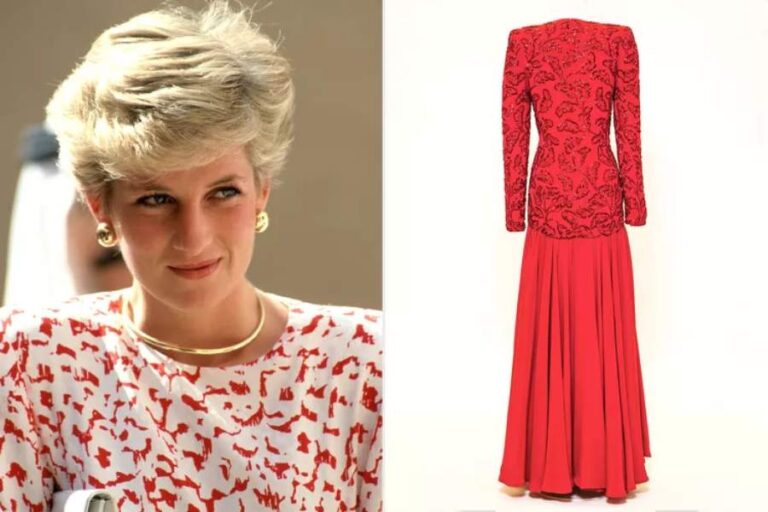A new exhibition at Kensington Palace is spotlighting the fascinating and sometimes rigid world of royal fashion, revealing how clothing has long played a pivotal role in royal tradition, diplomacy, and personal expression. Opening on March 13 and running through November 30, 2025, Matthew Storey of Historic Royal Palaces has curated the exhibit titled Dress Code. It features iconic garments worn by royal family members, public figures, and lesser-known individuals whose clothing helped them access exclusive court settings.
Storey explains that while royal dress codes may appear distant from modern life, they are rooted in a universal experience: deciding what to wear and what messages our clothes send. “We all get dressed every morning, and we all think about how we present ourselves,” he said. “This exhibit connects history to that shared experience.” Drawing from a vast collection of over 10,000 items, Dress Code examines how fashion has been used to assert identity, display power, navigate cultural norms, and even make political statements.
Among the most celebrated pieces in the exhibition is a scarlet silk gown designed by Bruce Oldfield, worn by Princess Diana during a 1987 visit to Saudi Arabia. With long sleeves and a high neckline, the dress embodied elegance and cultural sensitivity, demonstrating Diana’s innate understanding of dressing diplomatically. Storey emphasized that official overseas visits require careful planning not only in scheduling but also in attire. Diana, known for working with the best British designers, used her wardrobe to honor the host country’s customs while remaining stylish and composed. The Saudi Arabian gown, worn in private, symbolizes how Diana transitioned from a rural teenager to a globally admired fashion icon.
The exhibition also features one of the most talked-about palace appearances by designer Vivienne Westwood, who wore a striking day dress when she was made a Dame in 2006. Although she adhered to the invitation’s requirement for a formal day dress, Westwood added a shoulder train referencing historical court fashion, deconstructed design elements, and a bold hat styled to recall revolutionary Che Guevara, complete with the initials “AR” for her Active Resistance campaign. Her look also included a tiara with tiny devil horns, a cheeky yet subversive addition that challenged expectations while still conforming just enough to the written dress code.
Another piece in the exhibition dates back to 1928 and belonged to Annie Lady Holcroft, who dressed formally to present her daughter at court. Though she was around 60 then, Lady Holcroft had to follow every regulation laid out by the Lord Chamberlain’s office in a published guidebook called Dress Worn at Court. Her ensemble featured an evening gown with a train attached at the shoulders, a veil with Prince of Wales feathers, gloves, and a fan — all elements that would have been checked at the palace entrance before she could proceed. The formality underscores how deeply embedded the rules of royal presentation were in society, especially for those seeking to advance their social standing.
Going further back in time, the exhibit also showcases an 18th-century court suit, the oldest item on display, made from ivory silk brocaded with silver thread and decorated with rosebud spots and blue silk bands. According to Storey, this suit represents an era before written dress codes existed, when unwritten social expectations and sheer opulence governed royal fashion. The embroidery included real silver, making the outfit a literal display of wealth. Only the privileged few who could afford such garments could attend court functions, highlighting the exclusivity of royal access.
The exhibition is not limited to royalty and aristocrats. It also features clothing worn by ordinary people during historic royal events. One example is a child’s dress made for Queen Elizabeth II’s 1953 coronation. The red, white, and blue frock is adorned with scenes from the coronation procession, including Westminster Abbey and Buckingham Palace. Storey said the dress reflects the joy and optimism of the postwar era. It shows how everyday people used clothing to celebrate national milestones and feel connected to royal occasions, even from their neighborhoods.
Another emotionally charged exhibit is a dress worn by Queen Alexandra during Royal Ascot in 1911 or 1912. Following her son’s death, Prince Albert Victor, in 1892, Alexandra chose to wear subdued colors for the rest of her life, reflecting a tradition known as half-mourning. The chiffon and lace dress in white and mauve illustrates how clothing served as an enduring symbol of grief and devotion. While Queen Victoria famously wore black mourning attire for decades, Alexandra embraced softer hues that still conveyed her sorrow in a less austere way.
The Dress Code exhibit illustrates that fashion has never been just about aesthetics in the royal world — it is a language of power, propriety, defiance, and emotion. From Diana’s culturally conscious ensembles to Westwood’s provocative palace protest, every display piece tells a story beyond the fabric. As Storey notes, clothing has always been about more than covering the body; it’s about expressing who we are and where we belong in society.
Tickets for the Dress Code at Kensington Palace are available through the Historic Royal Palaces website. The exhibit runs until November 30, 2025.


